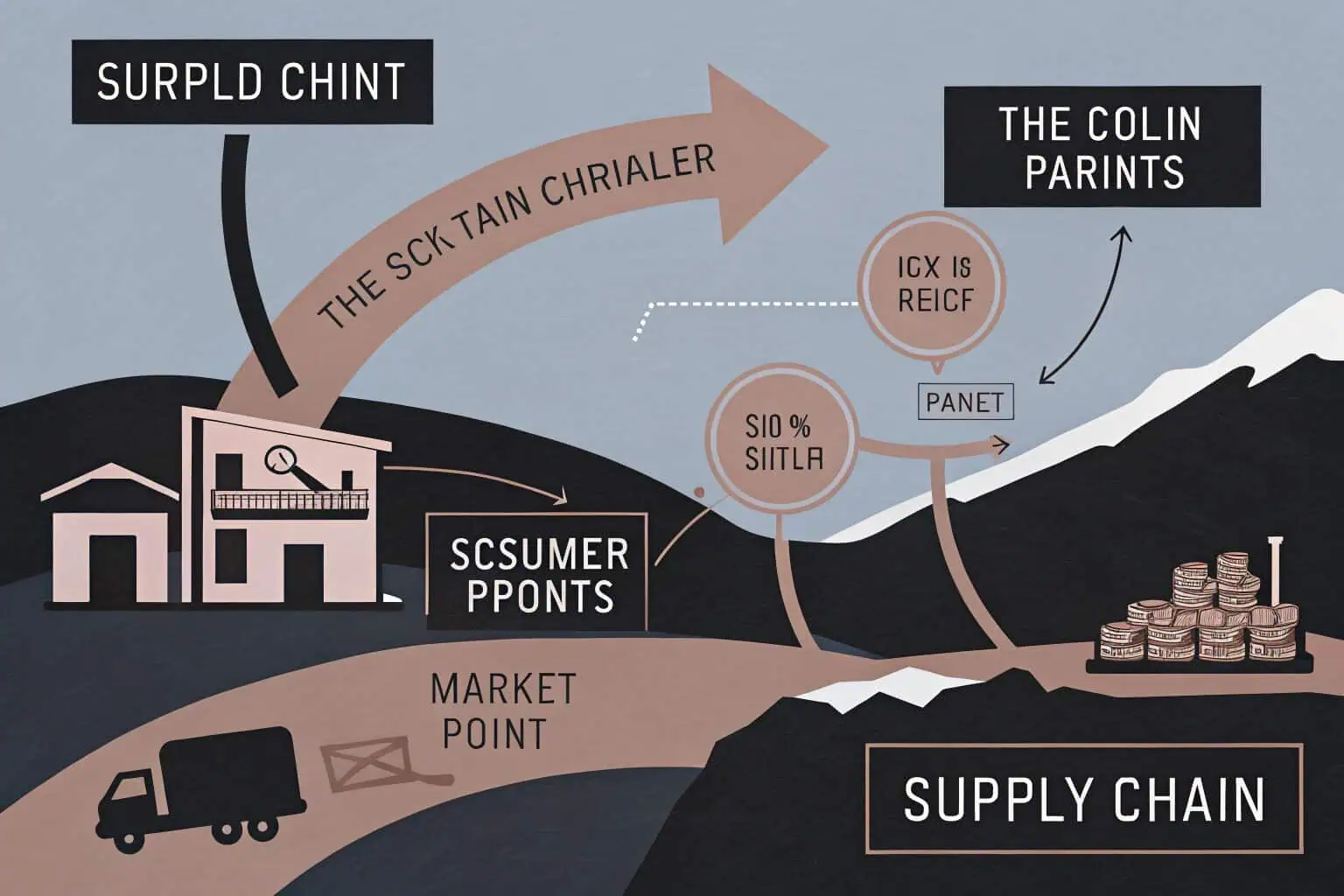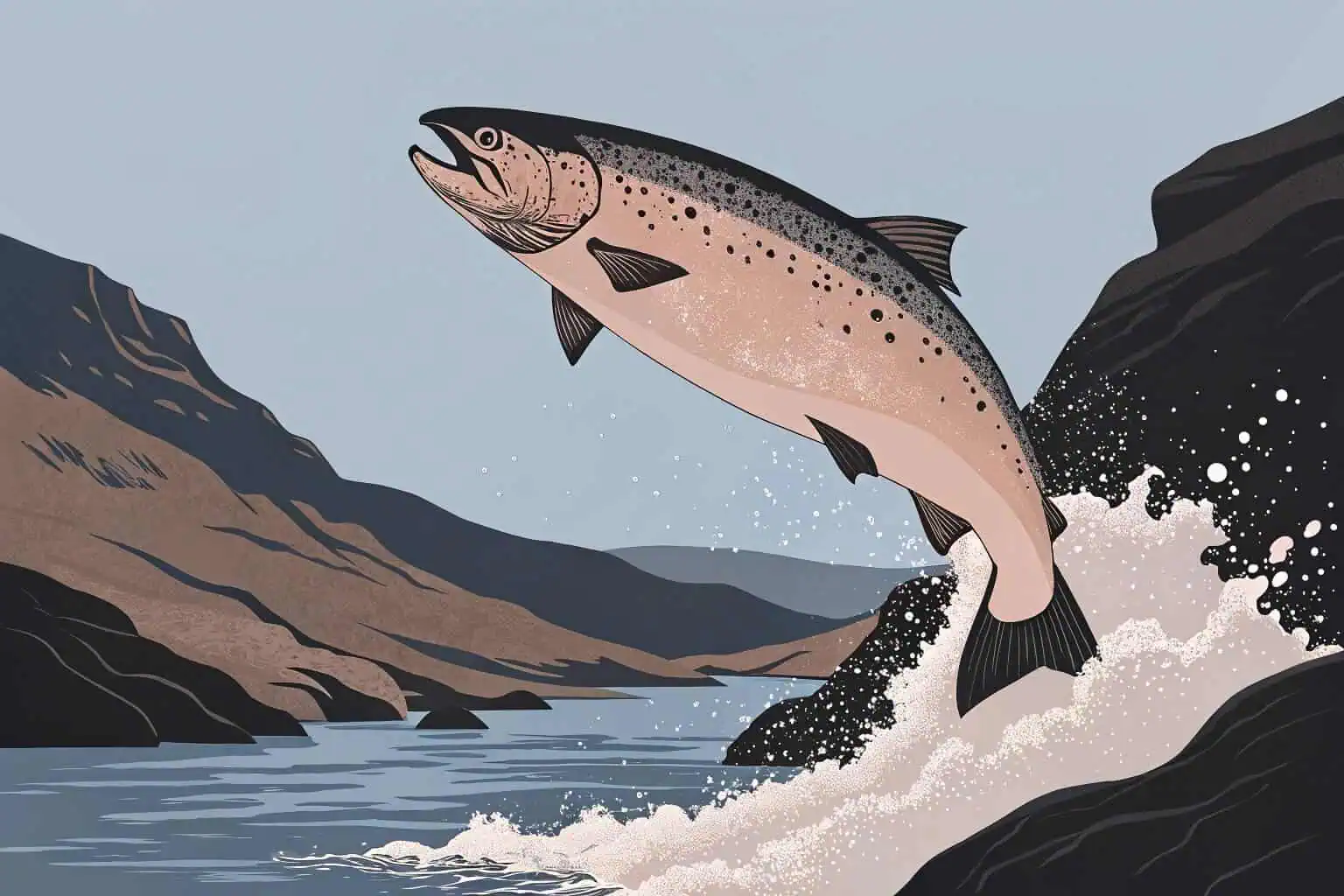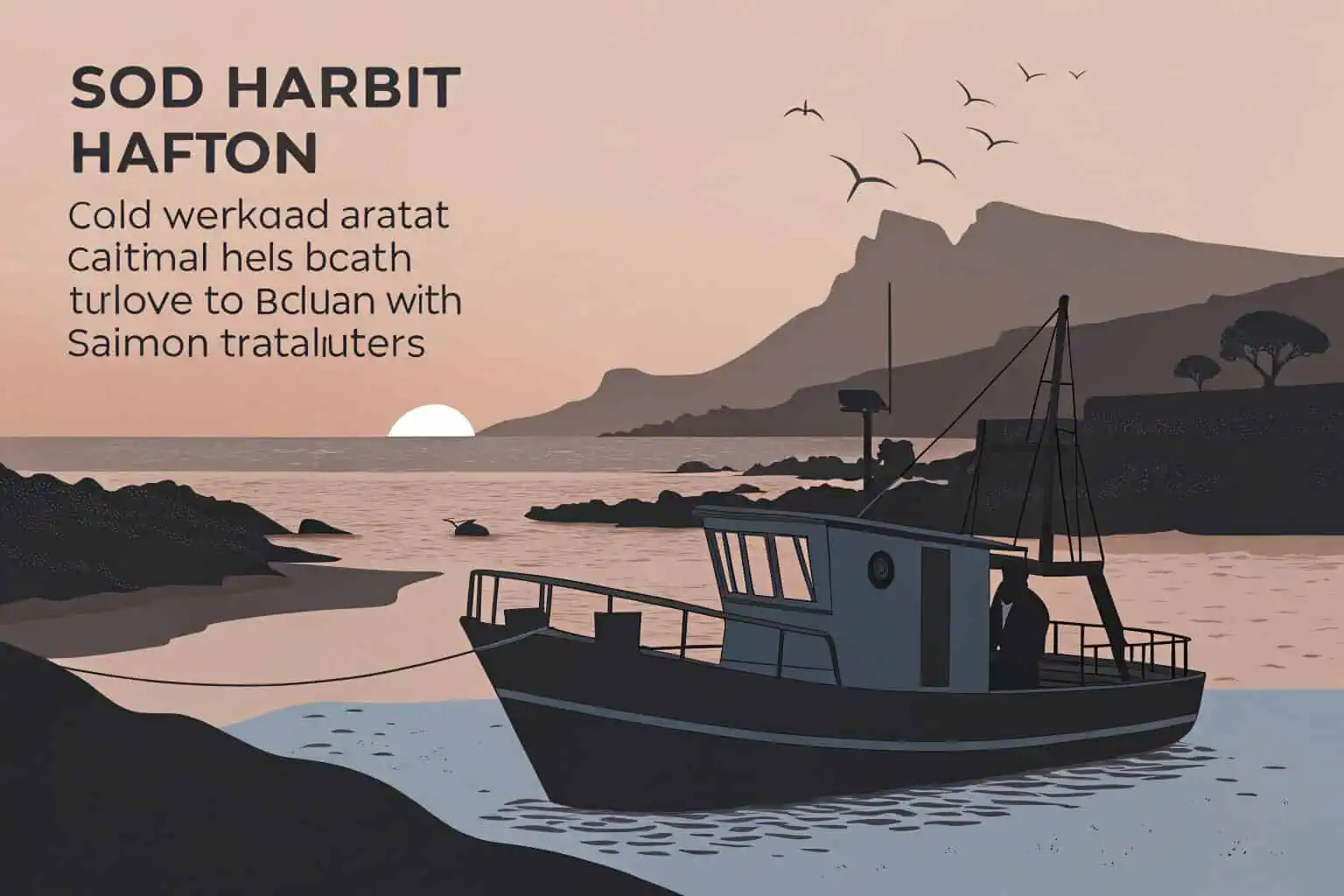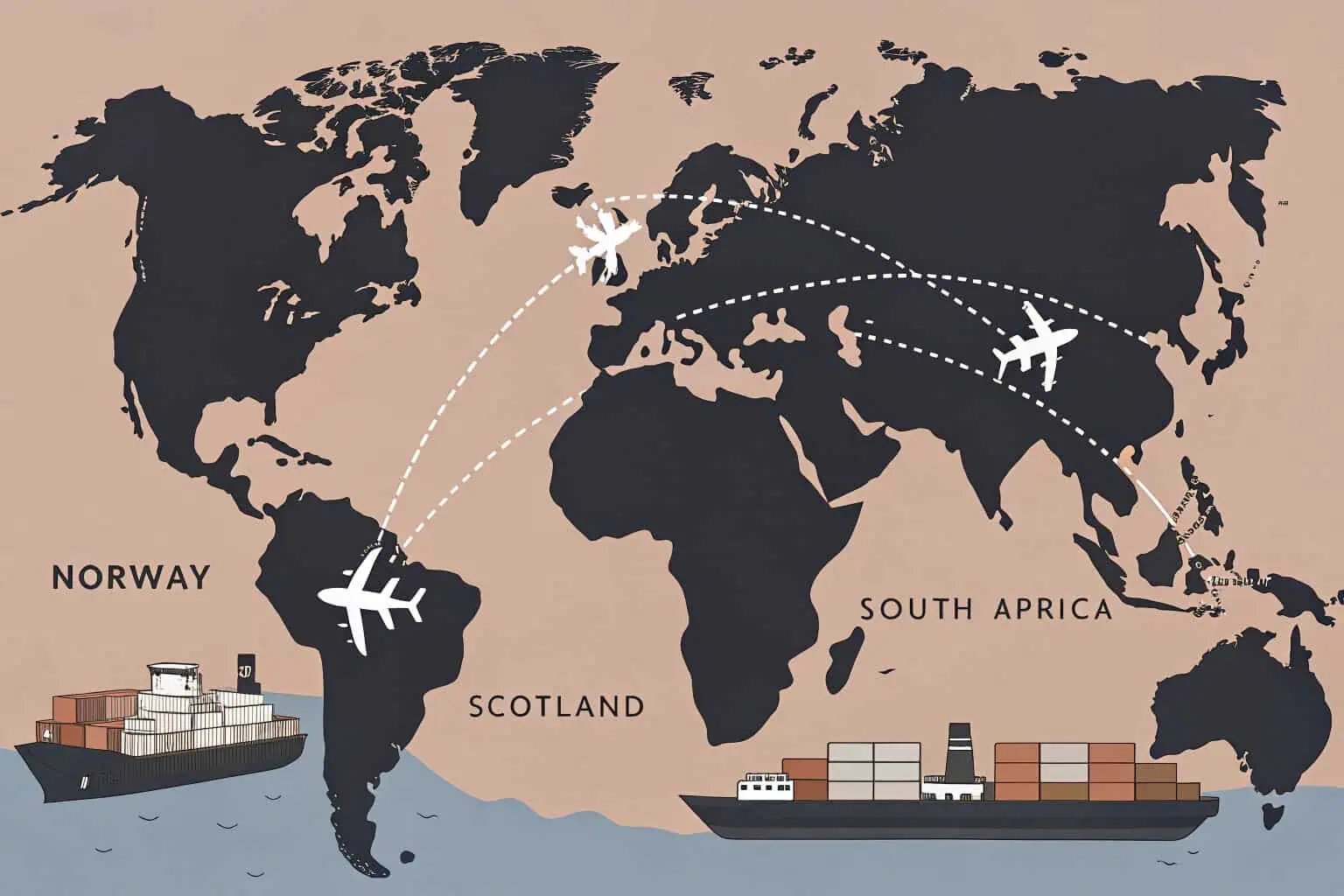Why is salmon so expensive in South Africa?
Understanding the cost factors is the solution to the puzzling high price of salmon, a luxury fish, in South Africa; exploring why this delicious fish comes with a hefty price tag is the action needed.
The high cost of salmon in South Africa is primarily due to import reliance, transportation expenses, tariffs, and complex logistics, making it a premium item for consumers and businesses alike.

I've always loved salmon, but living in South Africa, I often found myself wondering why it’s so much pricier here compared to other places I've visited. It’s a staple in many healthy diets and a star in countless delicious recipes, from simple grilled fillets to elaborate sushi platters. This curiosity led me down a path to understand the journey of salmon to our plates and the factors that contribute to its cost. It's a story of global trade, local demand, and the exciting potential for homegrown solutions.
Why is salmon expensive in South Africa?
Pinpointing the core reasons is the solution to the consistent high price of salmon in South Africa, a barrier for many, and the action needed is to break down the specific cost drivers.
Salmon's expense in South Africa stems from its journey: imported mainly from Norway and Scotland, incurring significant shipping, import duties, and logistical costs before reaching your plate.

When I look at the price of salmon in our local supermarkets or on restaurant menus, it's clear that several factors are at play. It's not just about the fish itself, but the entire supply chain. We're talking about a product that travels thousands of kilometers to get here. Think about the specialized refrigerated transport1 needed to keep it fresh, the import taxes2 that get added on, and the network of distributors who all need to make a margin. I remember chatting with a local chef who lamented how these costs impact his menu pricing, trying to balance offering quality salmon with keeping dishes affordable for his patrons. It’s a complex web, and each thread adds to the final price we pay.
Import Dependence
South Africa relies heavily on imported salmon3, predominantly from countries like Norway and Scotland. These are global leaders in salmon farming, but their distance means significant transportation costs. Air freight, often used for fresh salmon to ensure quality, is particularly expensive. I once tracked a shipment for a project, and the logistics involved were astounding – from the icy fjords of Norway to the warm shores of South Africa, every step meticulously managed, and every step adding to the cost.
Transportation and Logistics
Beyond the initial freight, there are internal logistics within South Africa. The salmon needs to be distributed from major import hubs to various cities and towns. This involves refrigerated trucking4, warehousing, and handling, all of which contribute to the overheads. I’ve seen the cold chain in action; it’s impressive but undeniably costly to maintain, especially with our country's vast distances.
Tariffs and Duties
Import tariffs and duties imposed on seafood products, including salmon, further inflate the price. These are government-levied taxes that aim to protect local industries or generate revenue, but for imported goods like salmon, they directly translate to higher consumer prices5. It’s a standard part of international trade, but one that consumers feel directly in their pockets.
Which country has the best salmon in the world?
Identifying top salmon-producing nations is the solution to the challenge consumers face in discerning quality with so many salmon sources, and the action needed is to explore where the finest salmon originates.
While "best" is subjective, Norway and Scotland are globally renowned for their high-quality farmed Atlantic salmon, prized for its taste, texture, and sustainable farming practices.

When I talk to seafood connoisseurs or chefs, the conversation about the "best" salmon often comes up. It's a bit like discussing the best wine – personal preference plays a huge role! However, certain countries have built a strong reputation for producing exceptional salmon. Norway, for instance, is a powerhouse. Their cold, clear waters are ideal for Atlantic salmon6, and they've invested heavily in sustainable aquaculture. I've read extensively about their farming techniques, which are some of the most advanced in the world. Scotland is another key player, famous for its Scottish salmon7, which has a distinct, rich flavour that many, including myself, adore. Then there's wild-caught salmon8 from places like Alaska, which offers a different taste profile and texture, often leaner and more intensely flavoured. The "best" really depends on what you're looking for – the buttery richness of farmed Atlantic salmon or the robust taste of wild Pacific varieties. For South Africa, the most common high-quality options we see are from these top European producers.
Factors Defining Quality
What makes salmon from one region potentially "better" than another? Several aspects come into play:
| Feature | Description | Impact on Quality |
|---|---|---|
| Water Quality9 | Clean, cold, and well-oxygenated water is crucial. | Affects fish health, taste, and reduces disease. |
| Feed10 | High-quality, nutritious feed, often marine-based. | Influences fat content, omega-3 levels, and flavor. |
| Farming Practices11 | Sustainable methods, low stocking densities, and minimal environmental impact. | Ensures healthier fish and ethical production. |
| Species | Atlantic salmon is commonly farmed; Pacific species (King, Sockeye) are often wild. | Different species have distinct tastes and textures. |
Personal Preference
Ultimately, the "best" salmon is the one that suits your palate and culinary needs. I've had amazing farmed salmon from Norway12 that melted in my mouth and equally incredible wild Alaskan sockeye13 that had a firm, satisfying bite. It’s worth trying salmon from different origins to discover your personal favourite.
Is salmon caught in South Africa?
Clarifying South Africa's salmon production status is the solution to consumers wondering about local salmon availability, and the action needed is to investigate if salmon is native or farmed locally.
No, salmon are not native to South African waters, and historically, there hasn't been significant commercial salmon fishing. Most salmon consumed is imported, though local aquaculture is emerging.

This is a question I get asked a lot, especially when people are trying to support local industries. The simple answer is that salmon are not naturally found in the waters around South Africa. They are cold-water fish, thriving in the northern Atlantic and Pacific Oceans. Our warmer coastal waters just aren't their natural habitat. So, you won't find local fishermen heading out to catch wild South African salmon because, well, they aren't there to be caught! For years, this meant that every piece of salmon we ate was imported. However, the landscape is beginning to change, albeit slowly, with the advent of aquaculture. I've been following some exciting developments in land-based salmon farming14 projects within South Africa. These facilities recreate the ideal conditions for salmon, offering a potential future where we can have locally grown salmon15. It’s a challenging venture, requiring significant investment and expertise, but the prospect of fresh, local salmon is certainly appealing.
Why No Native Salmon?
Salmon have specific environmental requirements for their life cycle, which South African marine ecosystems do not naturally provide:
- Cold Water Temperatures16: Salmonids thrive in water temperatures typically below 20°C. South African coastal waters are generally warmer.
- Freshwater Rivers for Spawning17: Salmon are anadromous, meaning they migrate from saltwater to freshwater rivers to spawn. While South Africa has rivers, they don't possess the specific characteristics (like gravel beds and consistent cool temperatures) that salmon require for successful reproduction on a large scale.
The Rise of Local Aquaculture
Despite the absence of wild salmon, there's a growing interest in farming salmon locally using Recirculating Aquaculture Systems (RAS)18. These are closed-containment systems on land that allow for precise control over water quality, temperature, and other environmental factors. I find this incredibly innovative. It’s a way to overcome natural limitations and potentially reduce our reliance on imports. These projects are still relatively new and face hurdles, but they represent a significant shift and a hope for a more sustainable local salmon supply in the future.
Where does South Africa import salmon from?
Identifying the primary import sources is the solution to the often unclear origin of South Africa's salmon for consumers, and the action needed is to pinpoint the main countries supplying salmon.
South Africa primarily imports salmon from Norway and Scotland, which are leading global producers of farmed Atlantic salmon, known for their quality and established supply chains.

When I look at the labels on salmon in stores or ask suppliers, two countries consistently come up: Norway and Scotland. These nations are the giants of Atlantic salmon farming and have well-established export networks reaching across the globe, including South Africa. Norway, in particular, is a massive supplier. Their industry is highly regulated and focuses on sustainable practices19, which is a big plus. Scottish salmon also has a premium reputation, often marketed for its superior taste and texture. While these are the main players, sometimes you might find salmon from other regions, like Chile, which is another significant global producer, or even smaller amounts from Ireland or the Faroe Islands. The choice of import source often comes down to factors like price, availability, and specific quality requirements of the importers and retailers. My experience in the food industry has shown me that these supply chains are incredibly well-oiled machines, ensuring a consistent, albeit expensive, supply of salmon to meet our growing demand.
Top Supplying Nations
Here's a quick look at the key salmon exporters to South Africa:
| Country | Type of Salmon | Key Characteristics |
|---|---|---|
| Norway | Farmed Atlantic Salmon | High volume, consistent quality, strong sustainability focus. |
| Scotland | Farmed Atlantic Salmon | Premium branding, distinct flavour, often higher price. |
| Chile | Farmed Atlantic/Coho | Growing exporter, competitive pricing. |
The Import Process
Importing salmon is a complex process. It involves agreements between exporters and importers, adherence to strict food safety and quality standards20, and efficient logistics to manage the cold chain from the farm to the South African consumer. I've seen how meticulous this has to be – any break in the cold chain can compromise the quality and safety of the product. This careful management, while essential, also adds to the final cost.
Conclusion
Salmon's high price in South Africa is a result of import reliance, transport costs, and tariffs, but emerging local aquaculture offers a promising, more accessible future for this beloved fish.
-
Exploring the role of refrigerated transport can help you appreciate the logistics behind maintaining salmon quality from ocean to table. ↩
-
Learning about import taxes can provide insight into the economic factors that contribute to the final cost of salmon in your area. ↩
-
Discover the key countries supplying salmon to South Africa and understand the impact on local markets. ↩
-
Exploring refrigerated trucking can provide insights into efficient transportation of perishable goods, essential for businesses in the food industry. ↩
-
Learning about the reasons behind higher consumer prices can empower consumers to make informed purchasing decisions. ↩
-
Explore the advanced farming techniques in Norway that contribute to the quality of Atlantic salmon, a favorite among seafood lovers. ↩
-
Discover the distinct characteristics of Scottish salmon that make it a sought-after choice for chefs and connoisseurs alike. ↩
-
Learn about the unique taste and texture of wild-caught salmon from Alaska, a favorite for those seeking a leaner option. ↩
-
Understanding water quality is essential for maintaining fish health and ensuring a sustainable aquaculture environment. ↩
-
Discover how the right feed can enhance fish quality, impacting both health and taste, which is crucial for consumers and producers alike. ↩
-
Exploring sustainable farming practices can help you learn how to produce fish ethically and with minimal environmental impact. ↩
-
Exploring this link will provide insights into the quality and sustainability of Norwegian farmed salmon, enhancing your culinary choices. ↩
-
This resource will delve into the distinct flavors and health benefits of wild Alaskan sockeye, perfect for salmon enthusiasts. ↩
-
Explore this link to understand how land-based salmon farming can revolutionize local seafood production and sustainability. ↩
-
Learn about the benefits of consuming locally grown salmon, including freshness, sustainability, and supporting local economies. ↩
-
Understanding the ideal cold water temperatures for salmonids can help in conservation efforts and habitat management. ↩
-
Exploring the necessary characteristics for salmon spawning can provide insights into habitat restoration and conservation strategies. ↩
-
Explore this link to understand how RAS technology is revolutionizing sustainable salmon farming and its environmental benefits. ↩
-
Understanding sustainable practices in salmon farming helps consumers make eco-friendly choices and supports responsible sourcing. ↩
-
Exploring food safety standards will provide insights into the regulations that protect consumers and ensure high-quality seafood imports. ↩